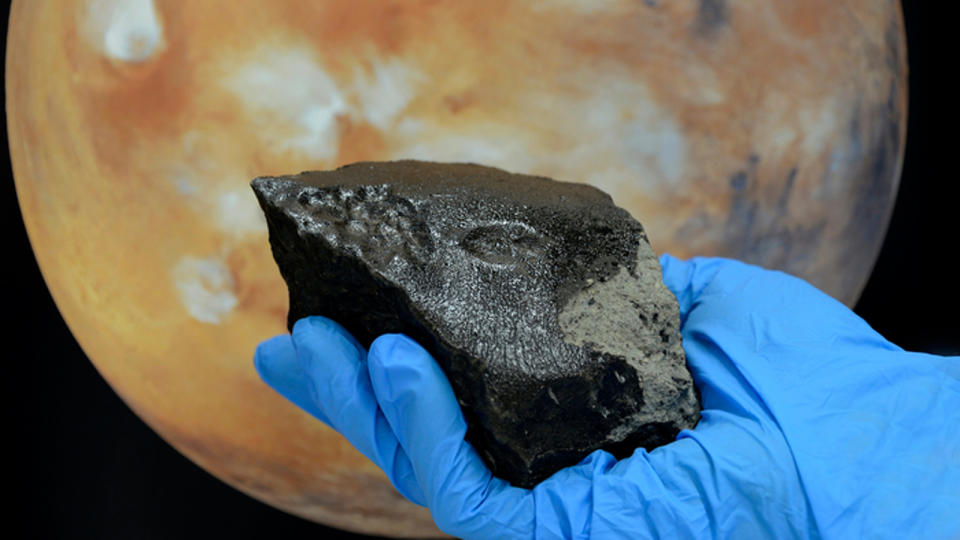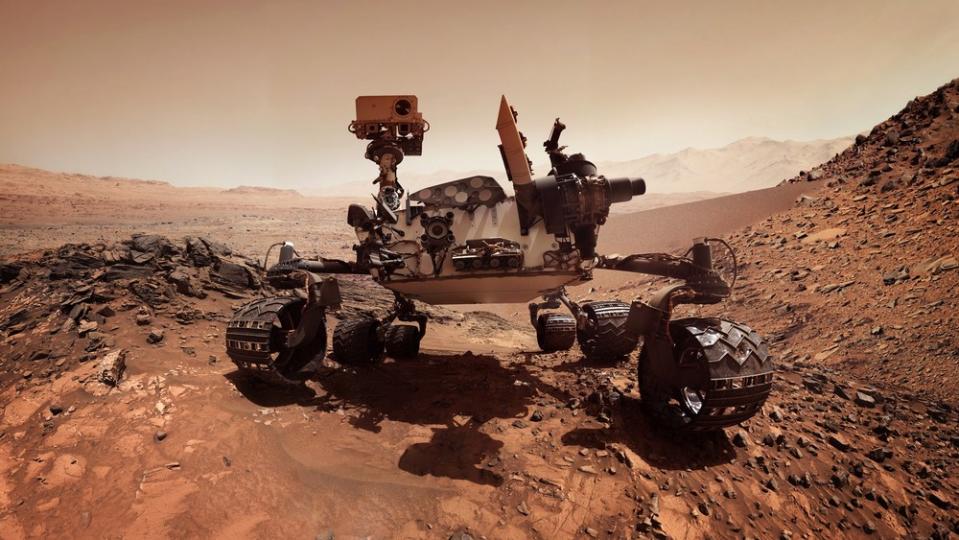Mars meteorite that crashed to Earth contains 'huge diversity' of organic compounds


A Martian meteorite that crashed to Earth 12 years ago contains a "huge diversity" of organic compounds, including one that has never been seen on Mars before, a new study has found. The findings could help scientists understand more about the Red Planet’s habitability and whether it potentially once harbored life, researchers said.
The Tissint meteorite broke apart in the sky above the city of Tissint in Morocco on July 18, 2011, showering fragments of the space rock across the surrounding desert. The meteorite, which formed on Mars hundreds of millions of years ago, was likely ejected from our cosmic next-door neighbor by a cataclysmic event before being caught in Earth's gravitational field. It is one of only five Martian meteorites witnessed by people as it crashed into our planet.
In a new study, published Jan. 11 in the journal Science Advances, researchers analyzed fragments of the meteorite and found examples of at least five different types of organics compounds.
The new study represents "the most comprehensive catalog ever made of the diversity of organic compounds found in a Martian meteorite or in a sample collected and analyzed by a rover," researchers wrote in a statement.
Related: Never-before-seen crystals found in perfectly preserved meteorite dust
Organic compounds are molecules that contain carbon atoms bonded to atoms from one or more other elements — usually hydrogen, oxygen, nitrogen and sulfur, as well as others. These compounds are highly abundant in all lifeforms on Earth, which means their presence in space rocks could potentially indicate the existence of life elsewhere in the solar system. However, some organic compounds can also be formed by non-biological processes, so scientists cannot know for certain whether such compounds are a sign of life on other planets.
The Tissint meteorite contained organic magnesium compounds, which are "extremely abundant" throughout the meteorite and have never been detected in Martian samples before, researchers wrote in the study. The team believes that these compounds were formed in the high-pressure and high-temperature conditions of Mars' ancient mantle (the layer beneath Mars' crust), meaning they are non-biological and could reveal clues about how the Red Planet’s deep interior was shaped.
The researchers also uncovered several other compounds within the meteorite, including aliphatic branched carboxylic acids — compounds that have similar structures to amino acids that make up proteins; aldehydes — compounds where a carbon is double bonded, or shares multiple electrons, with an oxygen atom; olefins, or hydrocarbons with one or more carbon atoms double bonded to each other; and polyaromatics — complex hydrocarbons that include multiple ring structures.

This is not the first time organic compounds have been discovered within a Martian meteorite. The Allan Hills 84001 meteorite, or ALH 84001, which crash-landed in Antarctica in 1984, contained several organic compounds; their discovery sparked years of debate about whether these compounds could have been formed by ancient Martian life forms. But in July, 2022, researchers discovered that the compounds within ALH 84001 were likely created by basic geological reactions billions of years ago.
Related: How many meteorites hit Earth every year?
Although none of these organic compounds identified in the new study are obvious biomarkers for alien life, the researchers note that they can still help teach scientists new things about our cosmic neighbor, potentially including whether the ancient geological conditions on the planet may have favored life.
"Understanding the processes and sequence of events that shaped this rich organic bounty will reveal new details about Mars’ habitability and potentially about the reactions that could lead to the formation of life," study co-author Andrew Steele, an astrobiologist at the Carnegie Institution for Science in Washington D.C. and a mission scientist with NASA's Perseverance and Curiosity rovers, said in the statement.
RELATED STORIES
—Two minerals never seen before on Earth found inside 17-ton meteorite
—World's largest Martian meteorite goes on display
—4.6 billion-year-old meteorite may reveal the origin of Earth's water
But future missions to Mars are needed to expand our understanding of the Red Planet before we can say more confidently whether or not life once flourished on Mars, the researchers said.
"The question of whether it [life] ever existed on Mars is a very hot research topic that requires deeper knowledge of our neighboring planet's water, organic molecules and reactive surfaces," study lead author Philippe Schmitt-Kopplin, a biogeochemist at the Technical University of Munich in Germany, said in the statement.

